 W
WMarching refers to the organized, uniformed, steady walking forward in either rhythmic or route-step time; and, typically, it refers to overland movements on foot of military troops and units under field orders. It is a major part of military basic training in most countries and usually involves a system of drill commands. A soldier learning to march to drum cadences, martial music and shouted commands is considered an essential element of teaching military discipline.
 W
WOn 3 November 2019, Daman Collector Rakesh Minhas issued a Section 144 order banning peaceful assembly of four or more persons, slogan-shouting and the use of loudspeakers across the entire district of Daman and ordered the conversion of Government High School, Bhimpore and the Government Sarvottam High School, Moti Daman into 'temporary jails'. This was in response to a land ownership dispute between the local indigenous fishing community and the local administration that had confiscated their land and bulldozed their homes. The ensuing protest resulted with the detention of 70 protesters in the 'temporary jails' and another 8 arrests. Few of the adivasi fisherfolk were rehoused whilst most languished traumatised and homeless on the streets near the rubble of their razed homes.
 W
WThe 2019 Mahatma Gandhi Birth Anniversary Padyatra or 2019 Gandhi March was a cultural march held during the celebration of 150th birth anniversary of Mahatma Gandhi in Bhavnagar district of Gujarat, India. The 150km long march lasted for seven days from 16 January 2019 to 22 January 2019. The event was organized by Mansukh L. Mandaviya, the Union Minister of State for Ports, Shipping and Waterways and Union Minister of State for Chemical and Fertilizer, and a Rajya Sabha member from Gujarat. The march passed through 150 villages of Gujarat with 150 prominent followers of Gandhi. The aim of the march was to spread basic education among public and to introduce the Gandhian philosophy to young generation.
 W
WAnabasis is the most famous work of the Ancient Greek professional soldier and writer Xenophon. It narrates the expedition of a large army of Greek mercenaries hired by Cyrus the Younger to help him seize the throne of Persia from his brother, Artaxerxes II, in 401 BC.
 W
WMarch to the Brazos is the largest and most successful student-led fundraiser for the March of Dimes in the United States, and raised over $1.5 million between 1977 and 2007. The annual event is organised and comprised completely of members of the Corps of Cadets at Texas A&M University. In the spring semester, the cadets conduct a 18 miles (30 km) round-trip road march starting from their dorms in the Quadrangle, through Main Campus and West Campus to Texas A&M's Animal Science Teaching, Research & Extension Complex (ASTREC) near the east bank of the Brazos River. After the first leg of the march, cadets participate in various competitions, eat lunch, and unofficially transfer ranks for the following school year. The day concludes with the march back under the leadership of the next Class, while the Class of the current year will ride buses back to campus.
 W
WCoxey's Army was a protest march by unemployed workers from the United States, led by Ohio businessman Jacob Coxey. They marched on Washington, D.C. in 1894, the second year of a four-year economic depression that was the worst in United States history to that time. Officially named the Army of the Commonwealth in Christ, its nickname came from its leader and was more enduring. It was the first significant popular protest march on Washington, and the expression "Enough food to feed Coxey's Army" originates from this march.
 W
WThe Darwin rebellion of 17 December 1918 was the culmination of unrest in the Australian Workers' Union which had existed between 1911 and early 1919. Led by Harold Nelson, up to 1000 demonstrators marched on Government House at Liberty Square in Darwin, Northern Territory, Australia where they burnt an effigy of the Administrator of the Northern Territory, John Gilruth, and demanded his resignation.
 W
WThe Dissenters' March was a series of Russian opposition protests that took place on December 16, 2006 in Moscow, on March 3, 2007 in Saint Petersburg, on March 24 in Nizhny Novgorod, on April 14 for the second time in Moscow, on April 15 again in Saint Petersburg, on May 18 in Samara, and on May 19 in Chelyabinsk. Some of them were featured in various media outlets.
 W
WThe Drumcree conflict or Drumcree standoff is a dispute over yearly parades in the town of Portadown, Northern Ireland. The town is mainly Protestant and hosts numerous Protestant/loyalist marches each summer, but has a significant Catholic minority. The Orange Order insists that it should be allowed to march its traditional route to and from Drumcree Church on the Sunday before the Twelfth of July. However, most of this route is through the mainly Catholic/Irish nationalist part of town. The residents, who see the march as sectarian, triumphalist and supremacist, have sought to ban it from their area. The Orangemen see this as an attack on their traditions; they had marched the route since 1807, when the area was mostly farmland.
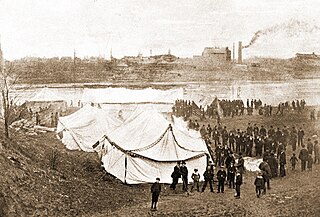 W
WFry's Army was the informal name given to a short-lived radical protest movement organized in Los Angeles, California in 1894 and headed by trade union and socialist political activist Lewis C. Fry. Fry's Army was one of about 40 "Industrial Armies" formed in 1894 to organize and transport unemployed workers for a march on Washington, D.C., the best remembered of which was the Ohio-based movement known as Coxey's Army.
 W
WThe Green March was a strategic mass demonstration in November 1975, coordinated by the Moroccan government, to force Spain to hand over the disputed, autonomous semi-metropolitan province of Spanish Sahara to Morocco. The demonstration of some 350,000 Moroccans advanced several kilometres into the Western Sahara territory. Morocco later gained control over most of the former Spanish Sahara, which it continues to hold.
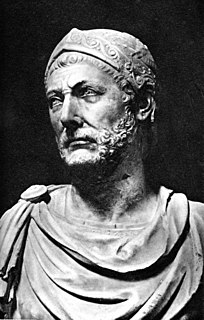 W
WHannibal was an Ancient Carthaginian general and statesman who commanded the forces of Ancient Carthage in their battle with the Roman Republic during the Second Punic War.
 W
WHikoi is a New Zealand English term generally meaning a protest march or parade, usually implying a long journey taking days or weeks.
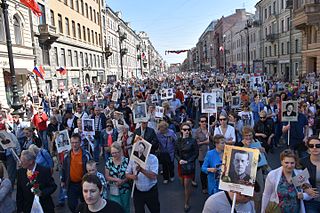 W
WThe Immortal Regiment is a massive civil event staged in major cities in Russia and around the world every 9 May during the Victory Day celebrations. It is also a public non-profit organization, created in Russia on a voluntary basis with the aim of "immortalizing" the memory of home front workers, armed forces service personnel, partisans, personnel of resistance organizations, and personnel of law enforcement and emergency services. It involves people carrying on the memory of war veterans, with participants carrying pictures of relatives and/or family friends who served in the country's labor sector, paramilitary units, the Soviet Armed Forces and law enforcement organizations during the Second World War.
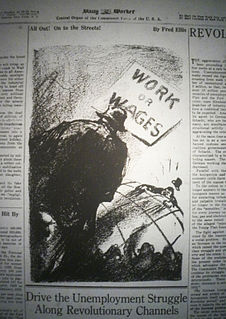 W
WInternational Unemployment Day was a coordinated international campaign of marches and demonstrations, marked by hundreds of thousands of people in major cities around the world taking to the streets to protest mass unemployment associated with the Great Depression. The Unemployment Day marches, organized by the Communist International and coordinated by its various member parties, resulted in two deaths of protestors in Berlin, injuries at events in Vienna and the Basque city of Bilbao, and less violent outcomes in London and Sydney.
 W
WThe March of the Iron Will was an Italian Fascist propaganda event staged from 26 April to 5 May 1936, during the final days of the Second Italo-Ethiopian War. The goal of the march was to capture the Ethiopian capital in a show of force. An Italian mechanized column under the command of Pietro Badoglio, Marshal of Italy, advanced from the town of Dessie to take Addis Ababa. The march covered a distance of approximately 200 miles (320 km).
 W
WThe Long March was a military retreat undertaken by the Red Army of the Communist Party of China, the forerunner of the People's Liberation Army, to evade the pursuit of the Kuomintang army. There was not just one Long March, but a series of marches, as various Communist armies in the south escaped to the north and west. The best known is the march from Jiangxi province which began in October 1934 and ended in Yan'an, Shaanxi province in October 1935. The First Front Army of the Chinese Soviet Republic, led by an inexperienced military commission, was on the brink of annihilation by Generalissimo Chiang Kai-shek's troops in their stronghold in Jiangxi province. The Communists, under the eventual command of Mao Zedong and Zhou Enlai, escaped in a circling retreat to the west and north, which reportedly traversed over 9,000 kilometres (5,600 mi) over 370 days. The route passed through some of the most difficult terrain of western China by traveling west, then north, to Shaanxi.
 W
W"The March" refers to a series of forced marches during the final stages of the Second World War in Europe. From a total of 257,000 western Allied prisoners of war held in German military prison camps, over 80,000 POWs were forced to march westward across Poland, Czechoslovakia, and Germany in extreme winter conditions, over about four months between January and April 1945. This series of events has been called various names: "The Great March West", "The Long March", "The Long Walk", "The Long Trek", "The Black March", "The Bread March", and "Death March Across Germany", but most survivors just called it "The March".
 W
WThe March of the Defenders also known as the Alternative Parade is a public march and demonstration held on the occasion of the Independence Day of Ukraine. This celebration honors all the veterans and serving personnel of the Armed Forces of Ukraine and other uniformed organizations, especially those who have been killed in action.
 W
WThe March of Remembrance and Hope (MRH) is a program designed for university and college students of all religions and backgrounds. The program takes place in mid-May, and includes a two-day trip to Germany, followed by a five-day visit to Poland. The international MRH program was founded in 2001 by Dr. David Machlis of the United States and Eli Rubenstein of Canada, both of whom were involved in the March of the Living program.
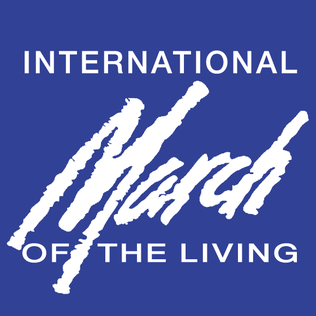 W
WThe March of the Living is an annual educational program which brings students from around the world to Poland, where they explore the remnants of the Holocaust. On Holocaust Memorial Day observed in the Jewish calendar, thousands of participants march silently from Auschwitz to Birkenau, the largest Nazi concentration camp complex built during World War II.
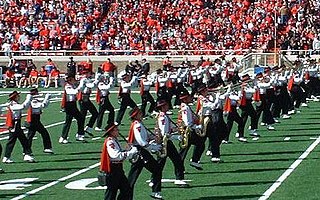 W
WA marching band is a group of instrumental musicians who perform while marching, often for entertainment or competition. Instrumentation typically includes brass, woodwind, and percussion instruments. Most marching bands wear a uniform, often of a military-style, that includes an associated organization's colors, name or symbol. Most high school marching bands, and some college marching bands, are accompanied by a color guard, a group of performers who add a visual interpretation to the music through the use of props, most often flags, rifles, and sabres.
 W
WThe National Equality March was a national political rally that occurred October 11, 2009 in Washington, D.C. It called for equal protection for lesbian, gay, bisexual, and transgender (LGBT) people in all matters governed by civil law in all 50 states and the District of Columbia. The march was called for by activist David Mixner and implemented by Cleve Jones, and organized by Equality Across America and the Courage Campaign. Kip Williams and Robin McGehee served as co-directors. Leaders like actress Michelle Clunie, Courage Campaign marketing director, Billy Pollina and New York gubernatorial aide Peter Yacobellis hosted the first fundraiser in the spring of 2009. This was the first national march in Washington, D.C. for LGBT rights since the 2000 Millennium March.
 W
WThe March on Rome was an organized mass demonstration in October 1922 which resulted in Benito Mussolini's National Fascist Party (PNF) ascending to power in the Kingdom of Italy. In late October 1922, Fascist Party leaders planned an insurrection, to take place on 28 October. When fascist demonstrators and Blackshirt paramilitaries entered Rome, Prime Minister Luigi Facta wished to declare a state of siege, but this was overruled by King Victor Emmanuel III. On the following day, 29 October 1922, the King appointed Mussolini as Prime Minister, thereby transferring political power to the fascists without armed conflict.
 W
WThe Ten Thousand were a force of mercenary units, mainly Greeks, employed by Cyrus the Younger to attempt to wrest the throne of the Persian Empire from his brother, Artaxerxes II. Their march to the Battle of Cunaxa and back to Greece was recorded by Xenophon, one of their leaders, in his work Anabasis.
 W
WThe Women's March on Versailles, also known as the October March, the October Days or simply the March on Versailles, was one of the earliest and most significant events of the French Revolution. The march began among women in the marketplaces of Paris who, on the morning of 5 October 1789, were near rioting over the high price and scarcity of bread. Their demonstrations quickly became intertwined with the activities of revolutionaries, who were seeking liberal political reforms and a constitutional monarchy for France. The market women and their various allies grew into a mob of thousands. Encouraged by revolutionary agitators, they ransacked the city armory for weapons and marched to the Palace of Versailles. The crowd besieged the palace, and in a dramatic and violent confrontation, they successfully pressed their demands upon King Louis XVI. The next day, the crowd compelled the king, his family, and most of the French Assembly to return with them to Paris.